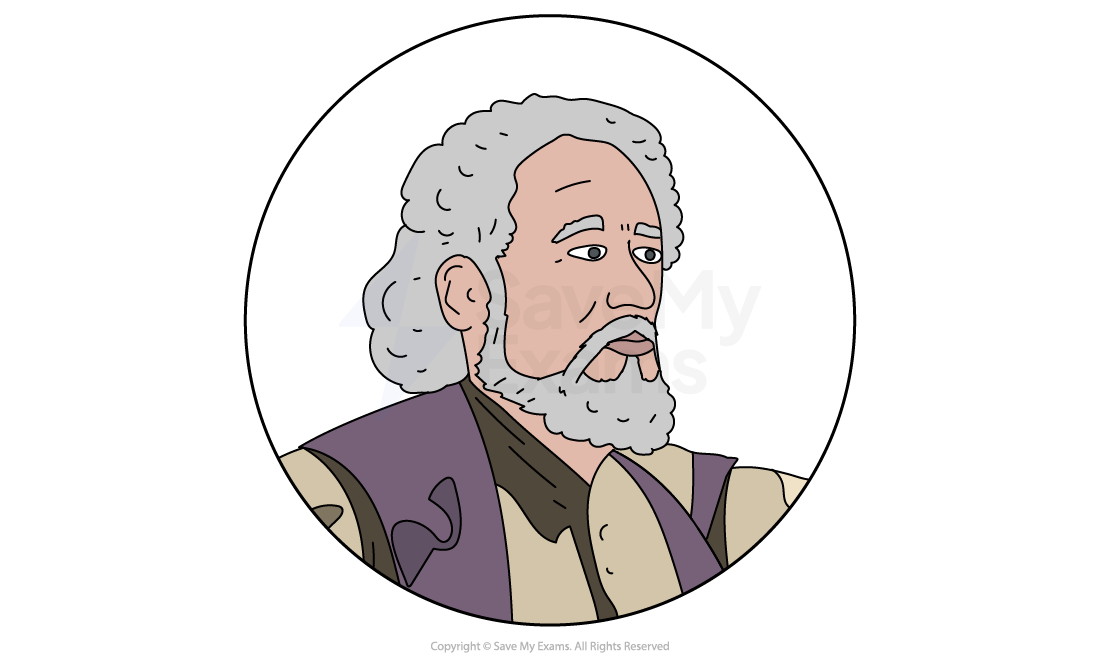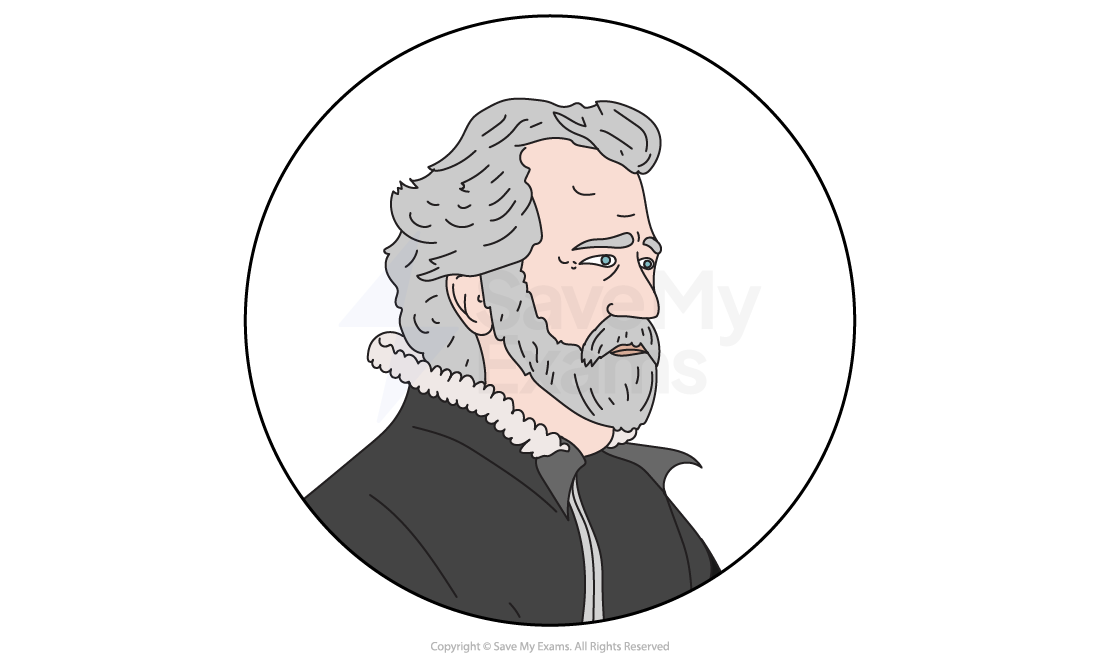The Tempest: Characters (AQA GCSE English Literature): Revision Note
Exam code: 8702
Whether the AQA literature exam question on The Tempest refers to theme or character, understanding what each character represents in the play will help you produce a better answer.
Shakespeare uses his characters to symbolise various ideas about society and human nature. It’s a good idea to consider how characters relate to each other, how they contrast each other, and how they reflect debates about betrayal, loss, magic, and power.
Below you will find character profiles of:
Prospero
Miranda
Ariel
Caliban
Other characters:
Antonio
Ferdinand
Stephano
Trinculo
Prospero

Prospero is the play’s protagonist (opens in a new tab): he represents the theme of magic in the form of knowledge:
He wears a magic cloak that can make him invisible, and he has a magic staff
But it is his books that bring him his power and help him create magic, referred to in the play as “arts” and “charms”
When his dukedom is taken and he is exiled from Milan, he tells Miranda that he “prizes” his library over his dukedom
Prospero’s complex characterisation presents ideas about the misuse of knowledge:
He teaches Caliban science upon his arrival, and strikes up an alliance
He releases Ariel from a tree in which he has been trapped
But he uses his power to control both Caliban and Ariel with fear and threats
Prospero illustrates how loss and betrayal lead to acts of revenge:
Prospero’s desire for full control of the island as a result of his lost dukedom creates the play’s conflict, and explores the effects of betrayal
However, while Prospero’s desire for justice as a result of his brother’s deceit is sympathetic, ironically he misuses his own power in his rule over the island:
He enslaves the natives (Caliban and Ariel), as well as Ferdinand
He conspires against the men, and lets King Alonso think his son is dead
Information is kept from his daughter throughout the play, and her marriage to the king’s son is carried out on Prospero’s terms
Nevertheless, the play’s denouement (opens in a new tab) shows audiences a changed Prospero:
Ironically, his anagnorisis comes with the success of his plans
At the same time as his omnipotence is proven, he concludes: “the rarer action is/In virtue than in vengeance”
He forgives his brother, is reinstated as Duke of Milan by King Alonso, and prepares to return the island to the natives
Prospero’s final words depict a humbled magician who has realised his own mortality and has grown tired of the illusion of control
Examiner Tips and Tricks
Examiners suggest that the extract given in the question is best used as a springboard for your examination of the whole play. It is therefore a good idea to explore how the character in the extract behaves and speaks in relation to elsewhere in The Tempest.
For example, if the extract comes from Act 1, then it will be worth exploring how the character is introduced to the audience, and moving beyond this into a developed analysis of how, and why, the character changes throughout the play.
Miranda

Miranda, Prospero’s daughter, is characterised as sheltered and innocent:
Audiences learn that Prospero limits information given to her, and makes her sleep or wake as he desires
In the exposition (opens in a new tab), her concern for the sailors on board the ship presents her as kind and empathetic
Her language is exclamatory and emotional
It is made clear that Ferdinand is the third man she has ever seen
Miranda’s love for Ferdinand, and subsequent marriage to him, is presented as less than ideal, typical of a Shakespeare comedy:
Miranda’s famous line describing a “brave new world” in Europe is comically naïve and presents her as unchanged by the end of the play
It provides the light mood and happy ending of a comedy
Shakespeare presents Miranda, the only female character in the play, as vulnerable to others’ plans for power:
Caliban wishes to make her his queen, so he can fill the island with his descendants
Stephano, too, plans to kill Prospero and make Miranda his “queen”
Prospero designs her marriage in a way that gains him control and political power
Ariel

Ariel, a spirit of the island, represents the theme of magic:
The play refers to Ariel as male, although he shapeshifts into other figures, such as a “harpy”, a mythical half-woman, half-bird
Ariel’s invisible songs and words trick the king’s men
In some ways, Ariel is the deliverer of justice to Prospero’s traitors
Ariel even tells Prospero the men have been sufficiently punished
Ariel also represents the idea of power and control:
Ariel, like Caliban, is a victim of powerful rulers, but his patient obedience makes him a more sympathetic character
In the exposition, audiences learn that Prospero rescued Ariel from the tree in which he was trapped by Sycorax, a witch
As loyal servant to Prospero, audiences witness how his patient and consistent adoration of Prospero is taken for granted
Ariel’s pleas to be released from his work are repeatedly ignored and his freedom delayed
By the denouement, Ariel provides a sense of catharsis (opens in a new tab) as order and justice is restored: he is finally freed Ariel as Prospero leaves the island
Caliban

The characterisation of Caliban represents themes of colonialism:
He is described constantly as a “monster”, “savage”, and “strange”
Miranda refers to his “vile race” as pure evil
The idea of cultural differences and, perhaps, exploitation of natives by powerful settlers is depicted when Caliban is given alcohol
There is a sense of pathos (opens in a new tab) when a drunken Caliban instantly worships Stephano and Trinculo and believes they are gods
Caliban also presents ideas about loss and betrayal:
He is a resentful and bitter character, willing to regain control of the island by violent means
He attacks Miranda and wants to “knock a nail” in Prospero’s “head”
Caliban’s love for the island implies a sense of patriotism:
He repeatedly refers to the island in the possessive “my”, complaining bitterly that it was “stolen” from him
He personifies (opens in a new tab) it as “sweet airs” that “hurt not”
Audiences learn that he shared his knowledge for the “barren” and the “fertile” areas of the island with Prospero
His dismissive response to having been taught English is reflected in his suggestion that this only taught him to “curse”
Examiner Tips and Tricks
One of the things examiners will be looking for in your response to your question on The Tempest is how characters represent ideas. To do this, you can consider how Shakespeare presents character contrasts or, as the examiners state, look at “contrasts and parallels in characters and situations at different points in the text”.
You don’t always need to use quotations to support your ideas. For example, you could write: “Prospero and Caliban share many similarities in order to represent ideas about power and betrayal. Both characters show aggression towards one another and, although they are both depicted as intelligent and sophisticated speakers, they use crude insults that illustrate their extreme resentment.”
Other characters
Antonio

Antonio is Prospero’s treacherous brother, the comic villain:
He represents ideas of betrayal and political corruption:
His language often refers to wealth and commerce, such as “advantage”, “credit” and “marketable”
Not only did he betray Prospero, taking his dukedom and exiling him from Milan, but he conspires to kill his ally, King Alonso, on the island
Antonio’s evil plans create comedy when they are prevented by Ariel’s mysterious intervention and Antonio has to find a reason for drawing his sword
Prospero’s forgiveness of Antonio in the denouement implies unconditional mercy: Antonio neither apologises or changes, suggesting a cycle of betrayal
Ferdinand

Ferdinand represents the idea of love and magic, a key element in comedy:
His relationship with Miranda is initially thwarted by Prospero, who tricks him, and makes him earn his place as his daughter’s husband
His love for Miranda is presented as pure, yet innocent
Ferdinand is a victim of Prospero’s desire for revenge:
He is separated from his father and mistreated as part of Prospero’s plan to deliver vengeance to his father
Stephano

Stephano provides comic relief, alongside Trinculo, and is also drunk throughout the play:
Caliban’s worship of him persuades him to help kill Prospero
However, he does this for his own motivations, to rule the island
Caliban describes him as a “dull fool” by the end, but he is characterised as opportunistic
His language contrasts Caliban’s: while Caliban speaks in blank verse (opens in a new tab), Stephano speaks in prose (opens in a new tab), presenting him as less sophisticated
He represents native and settler relationships: he calls Caliban a “servant-monster” and “Monsieur Monster”
Trinculo

Trinculo is another comedic character, the jester, and he is also drunk throughout the play
Slapstick fights and puns (opens in a new tab) with Stephano provide comic scenes:
Trinculo comments on how they can swim like “a duck”, and cannot be drowned as they are so full of liquor
When Ariel tricks Stephano and Caliban by impersonating his voice, stage directions state that Stephano “beats” Trinculo
Trinculo’s cruel treatment of Caliban, who he calls a “monster” repeatedly, presents him as callous and exploitative
Source
https://shakespeare.mit.edu/tempest/full.html (opens in a new tab)

Unlock more, it's free!
Did this page help you?